Blogs
Practical Insights & Latest Happenings
Don’t miss out on the latest trends and info on SEO, search engines, social media, and more.
March 26, 2024
mothasim
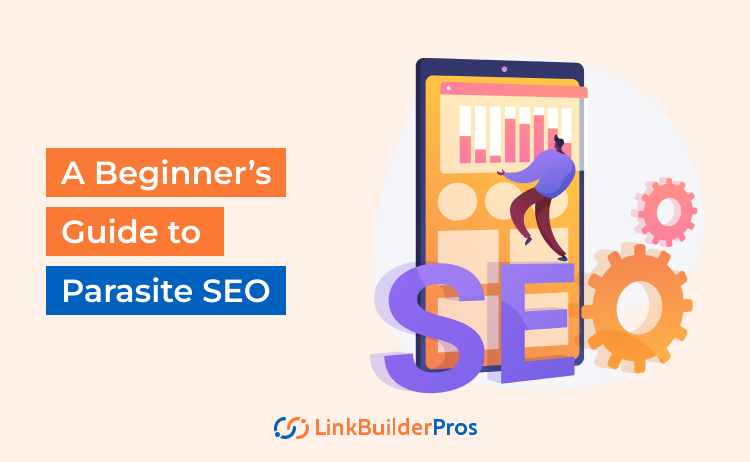
In simple words, just like a parasite that survives and thrives in or on its host, Parasite SEO is when you leverage the authority of a credible website to your ranking benefits.
You’ll be fine and see some quick boost as long as your parasite SEO strategy is practiced moderately. Here’s a complete guide on Parasite SEO where we covered everything that you should know before you craft your SEO strategy.
Parasite SEO is an SEO trick where instead of just relying on your site, you create content for a specific keyword and post it on another trusted site that Google already likes.
So, you’re kind of “borrowing” the authority of those popular sites to help boost your ranking. It’s an easy way to get more traffic from the host site and get some quality backlinks pointing to your domain.

But it has to be done carefully. Google won’t appreciate you overdoing Parasite SEO since it might think you’re trying to manipulate the system. It can work well if you make truly good content, promote it properly, keep an eye on performance, and adjust as needed.
Remember, the key is to find relevant host sites to your niche that everyone trusts.
Here are some ways to do Parasite SEO using different platforms:
Medium is a popular blogging platform that allows anyone to sign up for free and post articles on a variety of topics. Medium has a high domain authority, which indicates that Google and other search engines regard it as a trustworthy site.
When you upload good material on Medium with links back to your website, it can improve your site’s rating.
For example, you can write an informative article related to your business niche on Medium. In the article, organically link back to a relevant page on your website when it provides extra info for readers.
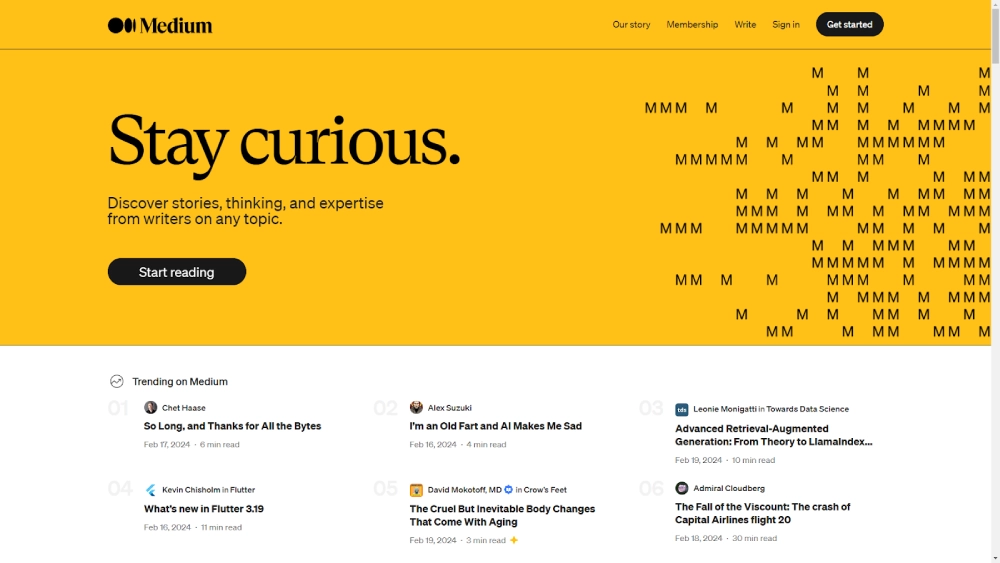
Since Medium already has authority, your article and website can gain a boost by being associated with it. Make sure your posts add value for Medium’s readers – don’t just spam links. Leverage its large reach and trust factor, while also providing useful information.
When you upload videos to YouTube that are valuable for your target audience, you can improve your rankings by leveraging its popularity.
For example, you can create helpful “how-to” videos related to your business and optimize them for SEO. Use keywords in the title, description, and tags that people search for on YouTube and are relevant to your niche. This makes it easier for your videos to get found.
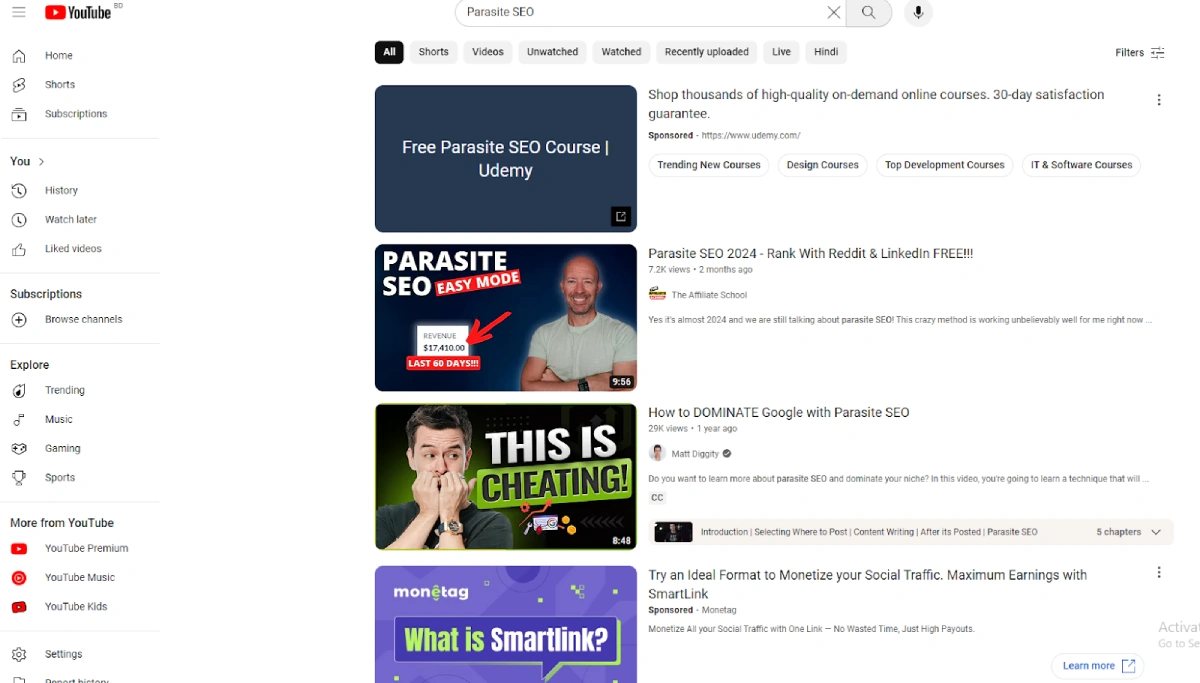
In the description below the video, include links back to your website for viewers who want more information. Just be sure the videos are useful and not spammy. Post regularly, provide info people want, and appropriately link to your site.
LinkedIn is the world’s largest professional social media platform where people connect to pursue business and career opportunities. When you share useful content on LinkedIn with connections back to your website, it can help with your SEO.
For example, you can publish posts on LinkedIn about topics your target audience cares about. Write informational articles, advice, or industry news that would interest users in your niche.

Since people discuss and share content on every topic imaginable on Reddit, you can engage authentically with relevant Reddit subs and benefit your SEO.
You can join subreddits related to your niche and start participating. Share articles, images, or videos that the community would find interesting. Provide helpful comments on other posts. Get to know the rules of each subreddit and follow proper Reddit etiquette.
Occasionally, it may make sense to link to your content if it’s highly relevant and valuable for others.

Search for questions related to your niche and provide detailed answers using your deep industry knowledge and experience.
If you have content on your website that would be useful for further explaining the topic, organically add a link to that page in your answer. Focus on truly being helpful – don’t just drop links.
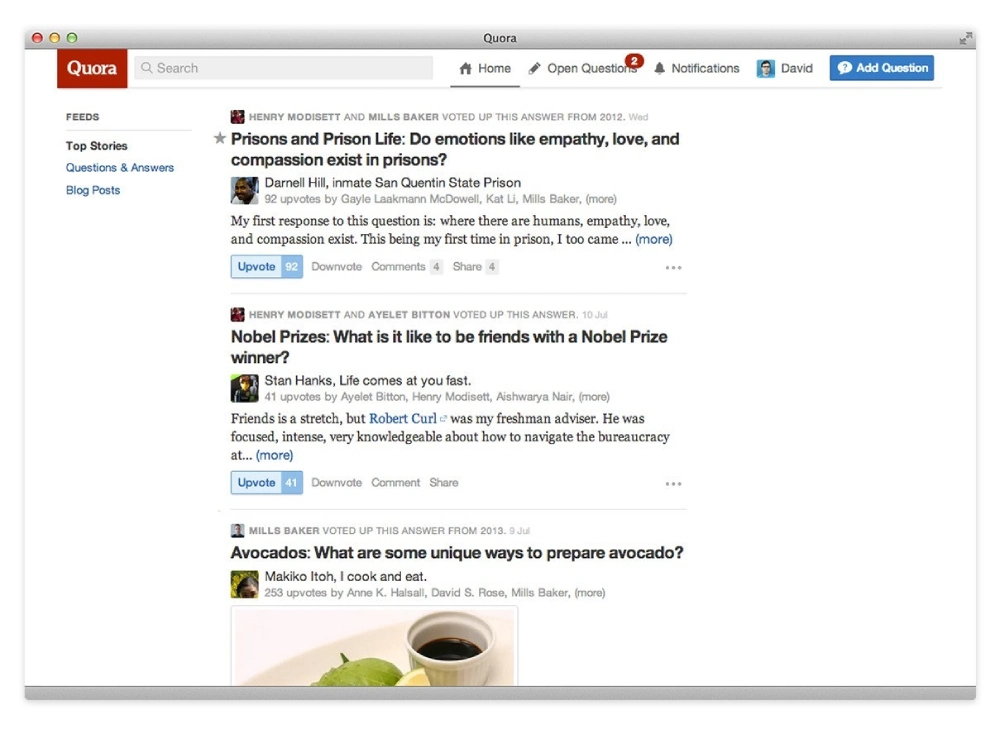
SlideShare is a LinkedIn-owned platform that allows users to upload and share presentations, infographics, documents, and videos. You can create an informative presentation about your industry niche, upload it to SlideShare, and then subtly include relevant links back to your website in the presentation slides and description where appropriate.
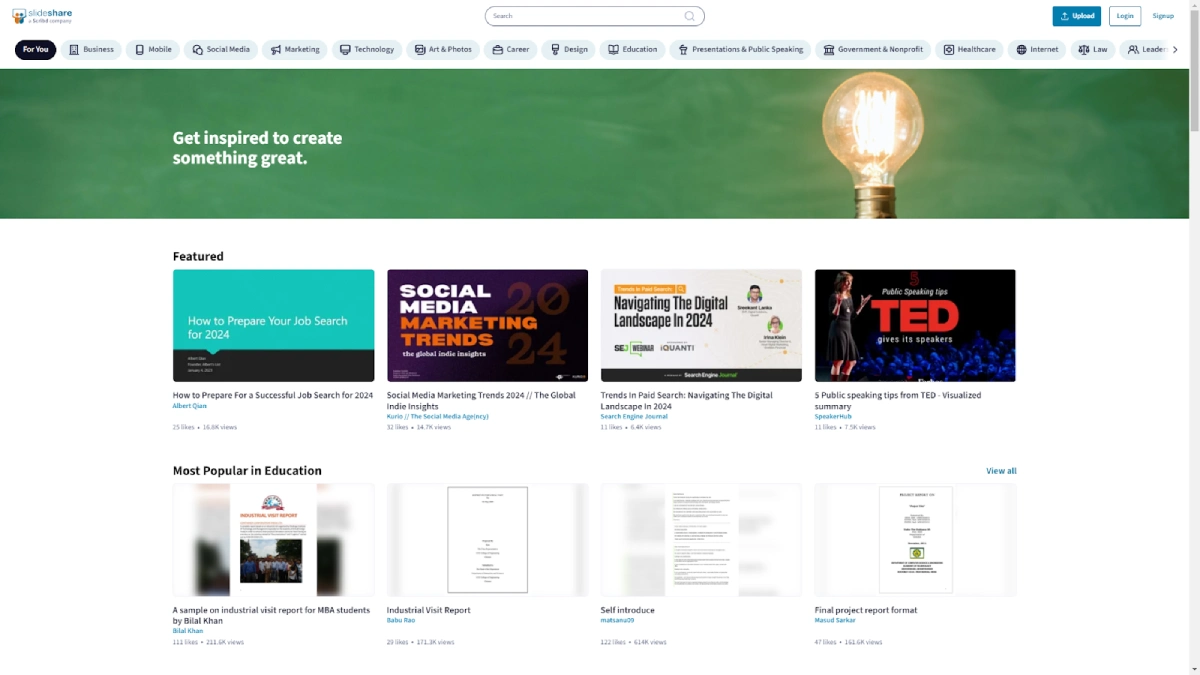
The first important step in Parasite SEO is doing thorough keyword and audience research. You need to find keywords that are relevant to your niche, have decent search volume, and are less competitive.
Tools like Google Keyword Planner can help identify good keywords to target. The other key is understanding your audience. Research who they are demographically, what pain points they have, and what goals or topics interest them. This allows you to create content truly tailored to their needs.
For example, a blog post titled “5 Ways Seniors Can Improve Memory” is more compelling if you know your readers are older adults concerned about cognitive decline.
The next step is selecting high-authority host sites to post your content on. Look for websites that already rank well for your target keywords, indicating they have strong trust and relevance in your niche. Checking a site’s domain authority metrics is a must to have an idea of its influence.
Additionally, seek out platforms that allow you to create your own pages, profiles, or content on them, such as social media sites, forums, blogs, YouTube, Quora, online directories, and more. They allow you to leverage the host site’s domain authority while still creating optimized assets.
Here’s an example, a DIY blog would be a prime parasite site to publish a “How-To” guest post. Try to identify sites that have topical relevance, engaged audiences, and options for contributing high-value content.
Once you’ve selected your parasite host sites, the next phase is creating high-value content on them. Write original articles, videos, forum posts, and more that align with your target keywords and provide usefulness for that site’s audience.
Optimize the content for SEO by organically working your primary and secondary keywords into the title, headings, body text, URLs, image names, meta descriptions, and so on.
Include a relevant call to action like “Learn more tips here” with a link back to your website for additional resources. An informative “Beginner’s Guide to Coding” article on Medium strategically targets certain keywords while providing legitimate value for readers.
Once your content is created and published on the parasite host sites, the next step is heavily promoting it to drive traffic, engagement, and links. Share your content across social media channels like Facebook, Twitter, LinkedIn and more.
Send it out in your email newsletter if you have one. Seek out opportunities to get it featured on other relevant sites and platforms in your space. The more exposure the content gets, the more authority-passing links it can potentially earn.
You can also proactively build links by reaching out to appropriate sites and asking them to link to your content if they find it helpful. The goal is to capitalize on the initial boost from publishing on authoritative domains and amplify that through promotion and link-building. This compounds the SEO value and spreads your influence.
The final critical step is closely monitoring your Parasite SEO content and strategy. Use tools like Google Analytics and Search Console to track important metrics like search rankings, clicks, traffic, engagement, and conversions.
Pay attention to what type of content, keywords, and links are driving the most value. Then double down on what works and adjust what doesn’t. For example, you may find guest posts generate more leads than forum contributions and shift your focus accordingly.
Stay up-to-date on Google’s algorithm changes and avoid tactics that may get your site penalized. SEO is always evolving, so you need to continually track results and refine your approach for the best ROI.
Parasite SEO can help new or low-authority websites rank higher and get results faster compared to typical SEO efforts. By piggybacking on authoritative domains, you bypass the need to slowly build credibility over time.
Using existing high-authority platforms minimizes the need for costly link building, content generation, and other SEO strategies to rank well. Parasite SEO is a more economical technique to gain a boost.
Publishing on established sites gives your content visibility and exposure to a much larger audience than your own site alone. This amplified reach can accelerate growth.
Influential websites and blogs already have tons of established visitors. Parasite SEO allows you to tap into these pre-existing flows of traffic from reputable domains.
Quality links from authoritative sites pass equity and rankings power. Parasite SEO provides opportunities to earn these valuable backlinks organically.
You have to play by the host site’s rules and guidelines. Your content could get removed or edited without notice.
Other websites can easily scrape or copy your parasite content without consent.
Too many links or promotional language could get your content removed or banned as spam.
Reaching out to webmasters for links and guest posts is very time consuming.
As algorithms evolve, these tactics become less effective over time. The benefits are short-lived.
You don’t own any of the content or links created. The host site retains full rights.
Parasite SEO can give a significant boost to a website with low domain authority and help it rank faster. Leveraging authoritative sites can kickstart progress.
For ultra-competitive keywords with high difficulty scores, parasite SEO provides a way for newer sites to gain traction against established domains.
Placing content on platforms with existing high traffic can generate streams of visitors back to your site.
Rather than relying solely on your own site’s content, parasite SEO taps into multiple external audiences.
High-quality links from authoritative sites in your niche are valuable for rankings. Parasite SEO done right can earn these.
Integrating parasite SEO as a component of a larger SEO strategy can provide an additional boost.
The key is sticking to white hat tactics, providing value, and handling parasite SEO ethically and strategically. When used judiciously in the right circumstances, it can move the needle.
If your website already has good trust and rankings, parasite SEO provides diminishing returns. Focus on building on your existing authority.
For easy-to-rank keywords, traditional on-page SEO is likely sufficient and more sustainable. No need to rely on external sites.
Too much parasite SEO early on can make a site appear spam before it establishes its own reputation. Build some authority first.
If your industry is extremely broad, it’s harder to find authoritative parasite sites closely aligned to your interests. Relevancy is key.
Parasite SEO complements but doesn’t replace needing great content on your own site. Can’t fully outsource authority.
Too promotional or excessive links will likely get your content removed or banned. Tread carefully.
Tactics that worked previously may stop working or start incurring penalties as algorithms evolve.
The best application of parasite SEO is strategic and moderate. It can provide an added boost but shouldn’t be relied on solely long-term for SEO needs.
Google doesn’t officially use the term “Parasite SEO” but they do have ways to identify and punish sites doing it. Their algorithms look for different signals:
Parasite SEO may work short term but may backfire sooner or later. Google is continuously improving at detecting manipulative linking and low-value content. Excessive or sloppy parasitizing often incurs penalties.
The best practice is to stay on the ethical side – create truly valuable content for each platform while subtly linking back to your site. Avoid getting greedy or spammy with links.
Overdoing parasite SEO can lead to major penalties from Google and other search engines:
Instead, focus your efforts on:
Moz Link Explorer is a great tool to check the domain authority of potential host websites for parasite SEO.
Link Explorer offers metrics like MozRank and Domain Authority to assess the power of prospective host domains.
This helps in strategically selecting ideal authoritative hosts to place content on for maximum Parasite SEO benefit.
Here are the key steps to use Moz’s Link Explorer for checking the domain authority of potential host websites during parasite SEO:
1. Sign up for a Moz Pro account or use a free trial if available.
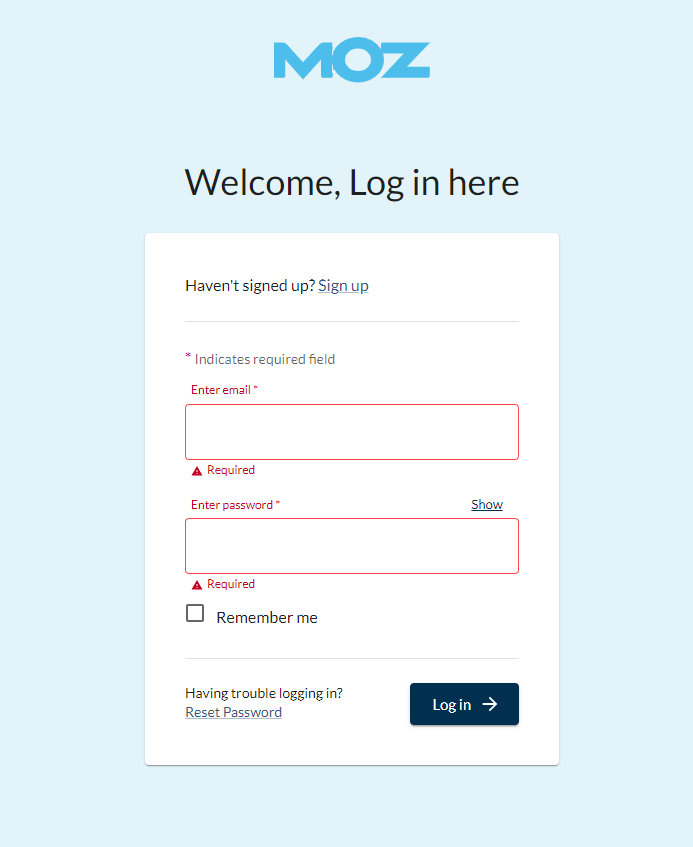
2. Navigate to Link Explorer through the Moz Pro dashboard.
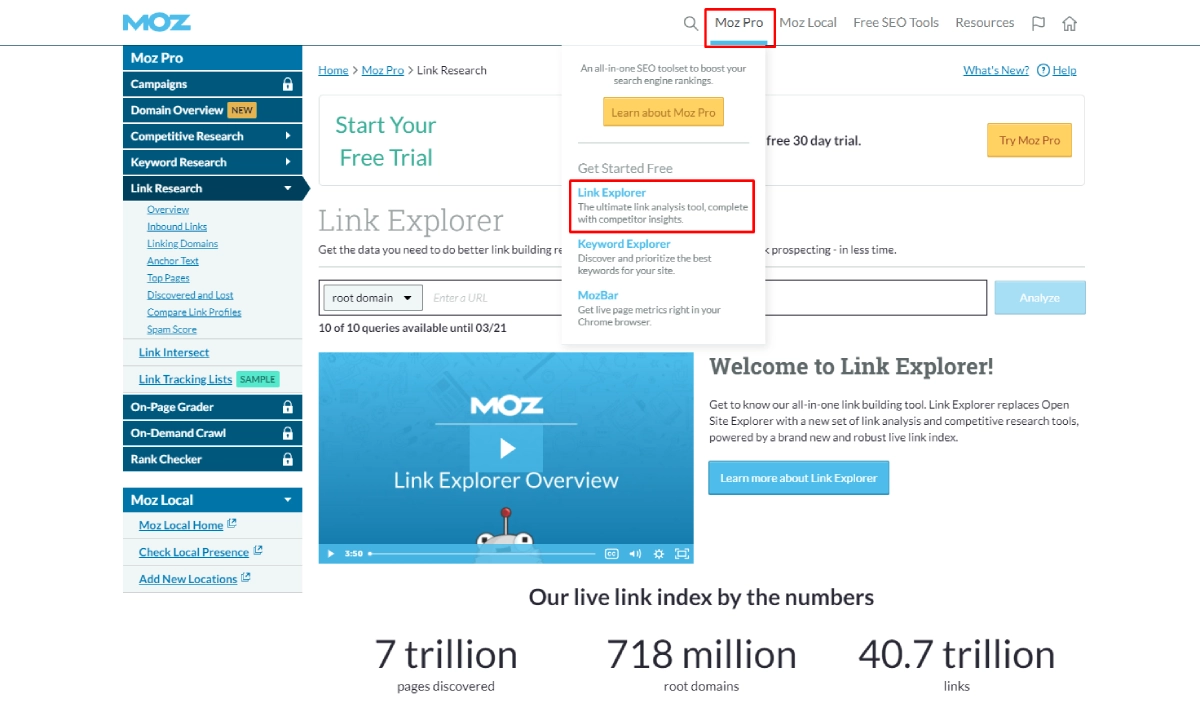
3. Enter the URL of the potential host website in the search field. Note that the index updates regularly with fresh link data, so Domain Authority scores may not immediately change unless new links are found.
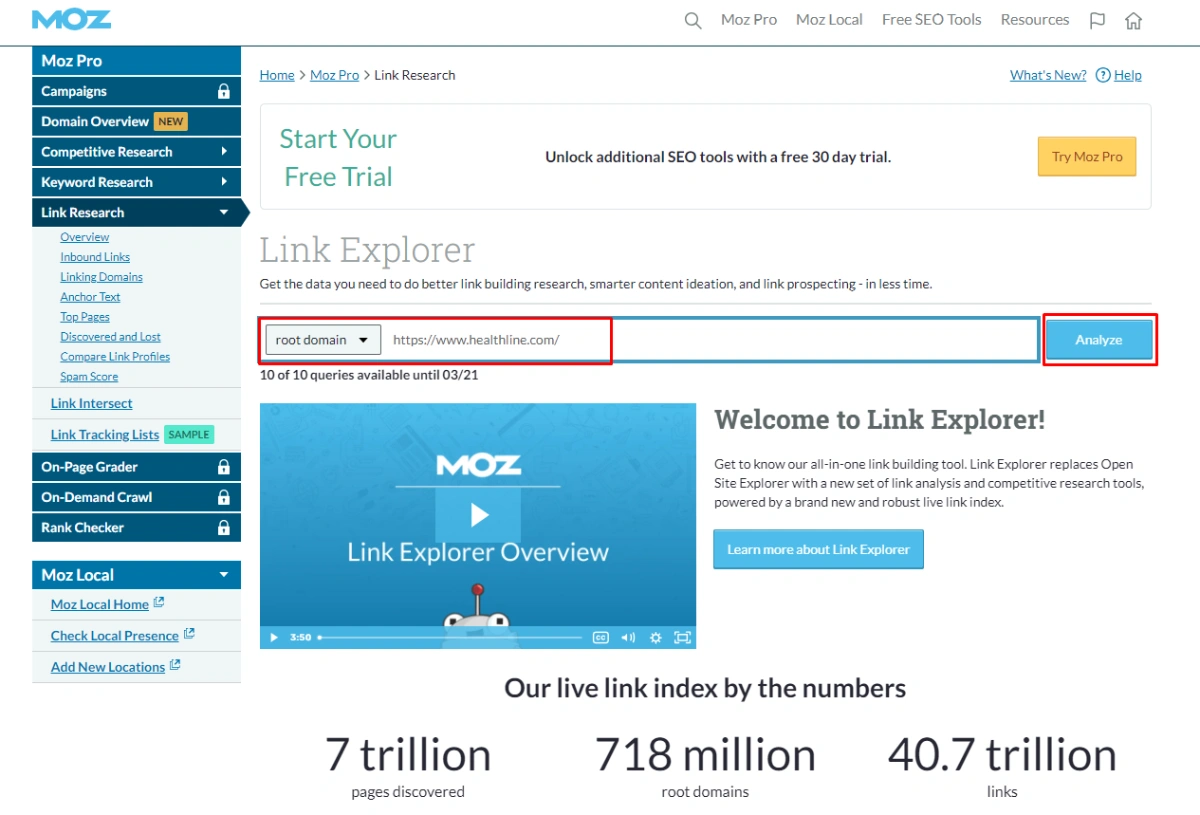
4. Analyze the Domain Authority (DA) and Page Authority (PA) metrics. DA indicates the overall strength of a website’s backlink profile. PA is similar but focused on individual pages.

5. Evaluate the quality of the backlink profile by examining the sources of incoming links and anchor text distribution.

6. Compare the potential host’s DA against your own website’s and competitors’ to determine if it’s suitable for parasite SEO.
Remember that Link Explorer uses Moz’s Dotbot crawler to collect accurate, up-to-date link data. Newly discovered links can be added to the index within about 3 days.
BuzzSumo is a useful tool for identifying high-performing content in your niche and influential platforms/voices to leverage for parasite SEO.
Here are the key steps to use BuzzSumo:
1. Go to https://app.buzzsumo.com/

2. Conduct searches based on your criteria
3. Enter a keyword/phrase to find popular content
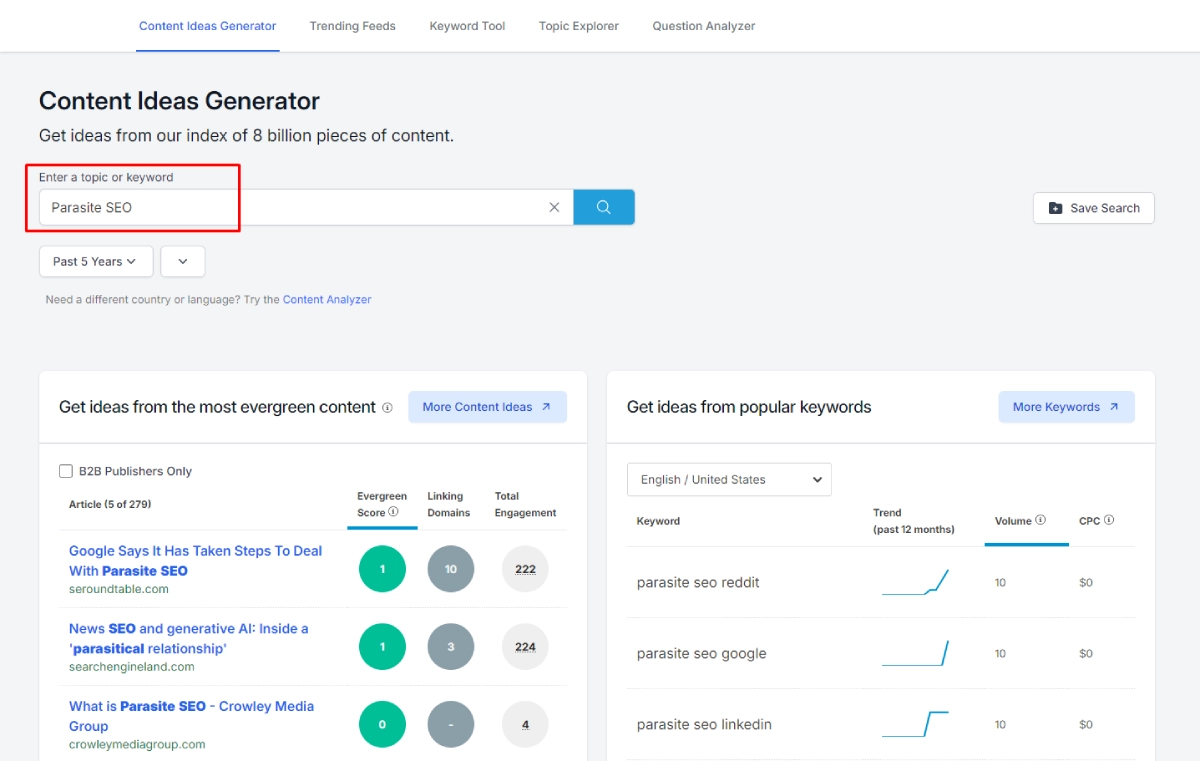
4. Go to Influencers and input a keyword/domain to find top influencers
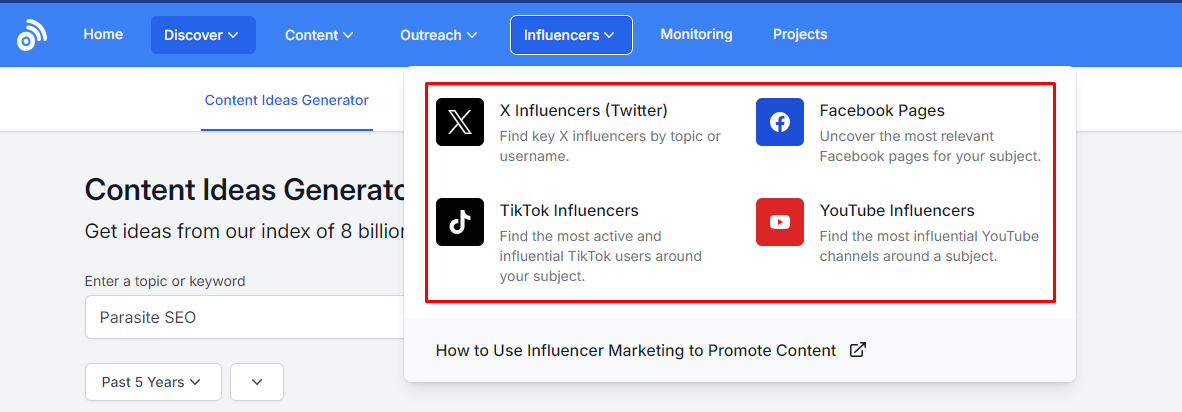
5. Visit the Discovery tab and select “Trending” to find trending topics
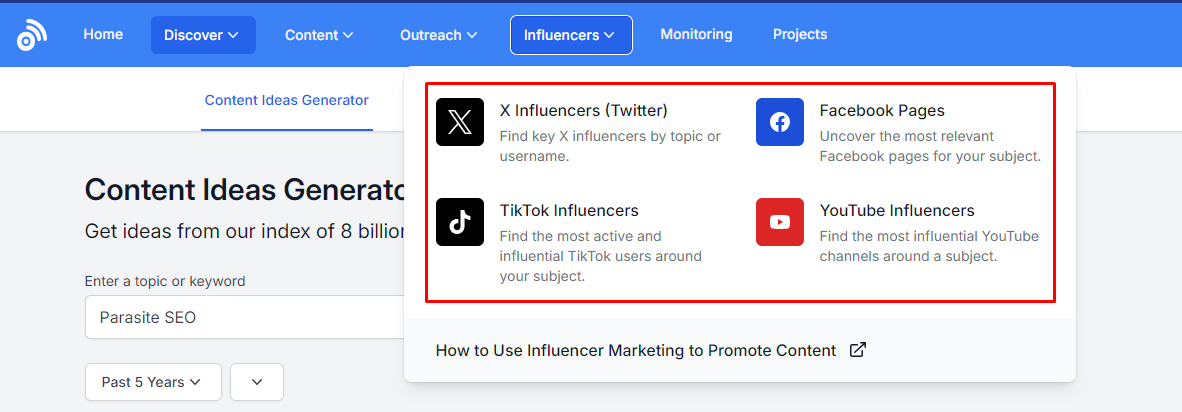
6. Use the Comparison feature under Competitive Analysis to analyze competitors’ content
7. Filter the results by parameters like date range, content type, language, etc.
9. Identify the most engaged content and influencers to inform your content strategy.
10. Use the Content Analyzer to further analyze content performance and characteristics.
11. Keep in mind BuzzSumo offers additional features and integrations to help expand your content marketing capabilities beyond basic discovery and analysis.
Semrush is a valuable tool for conducting comprehensive competitive analysis and uncovering backlinking opportunities.
Here’s how to use it:
1. Sign up for a Semrush account or access a free trial if available.
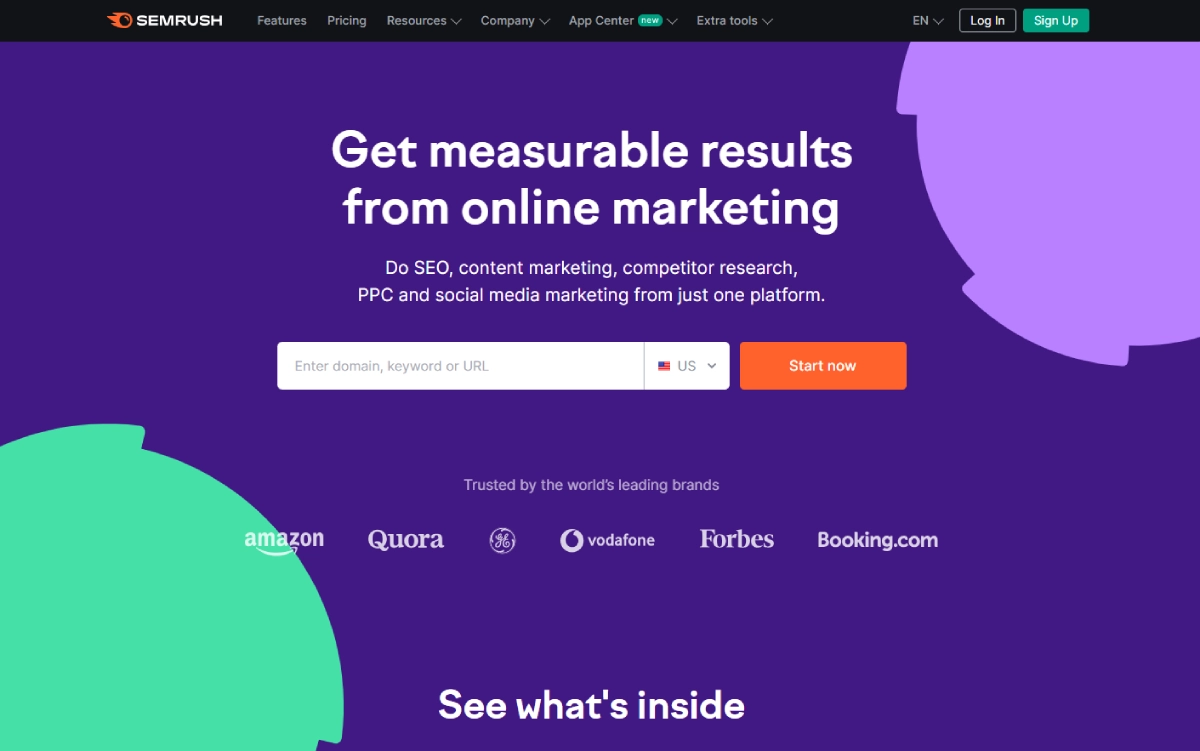
2. Navigate to the Competitive Research section through the dashboard.
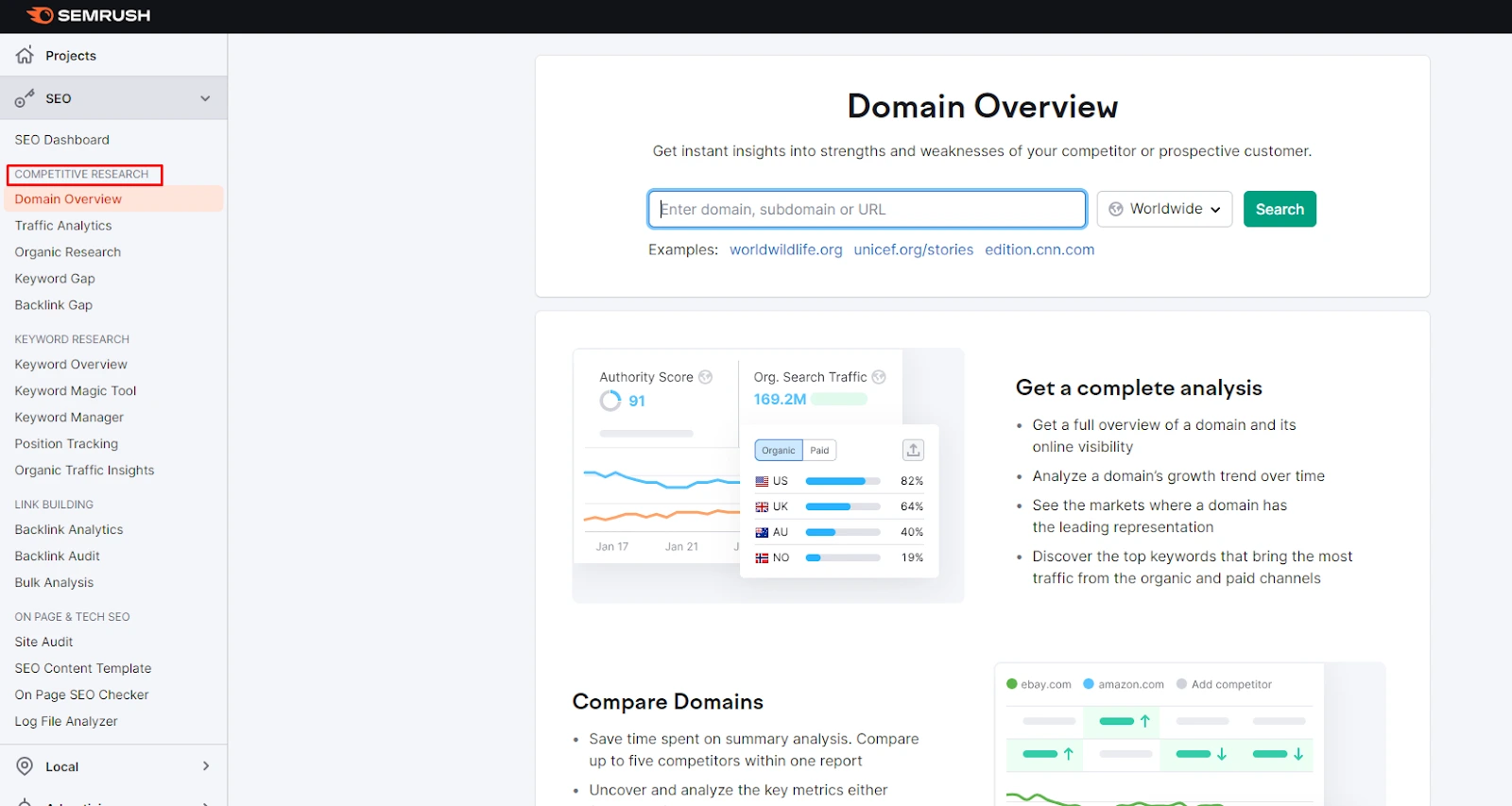
3. Enter the URL of a competitor or potential host website in the search field.
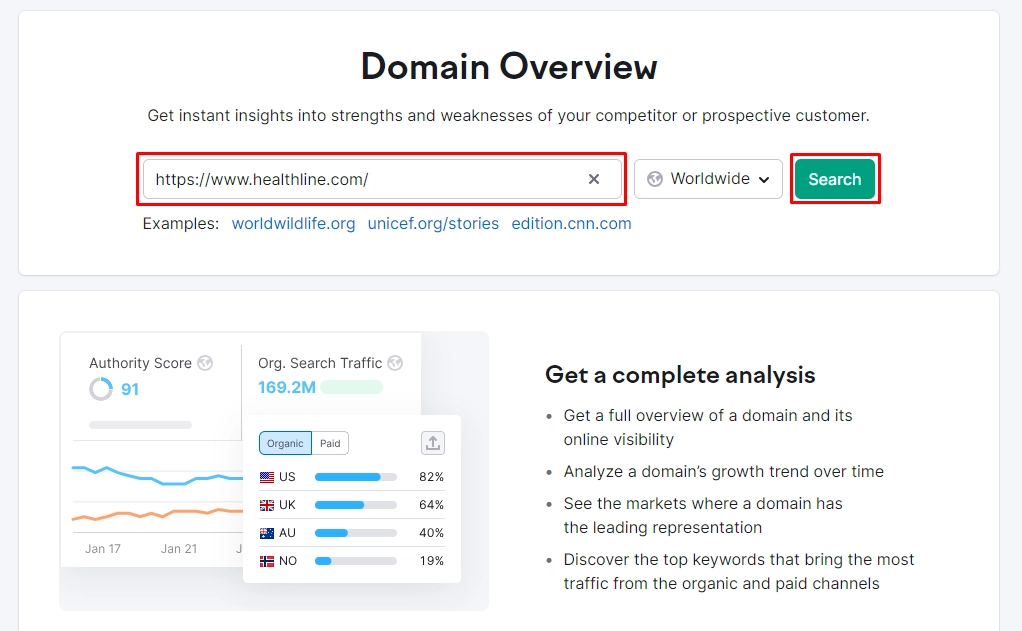
4. Analyze metrics like:
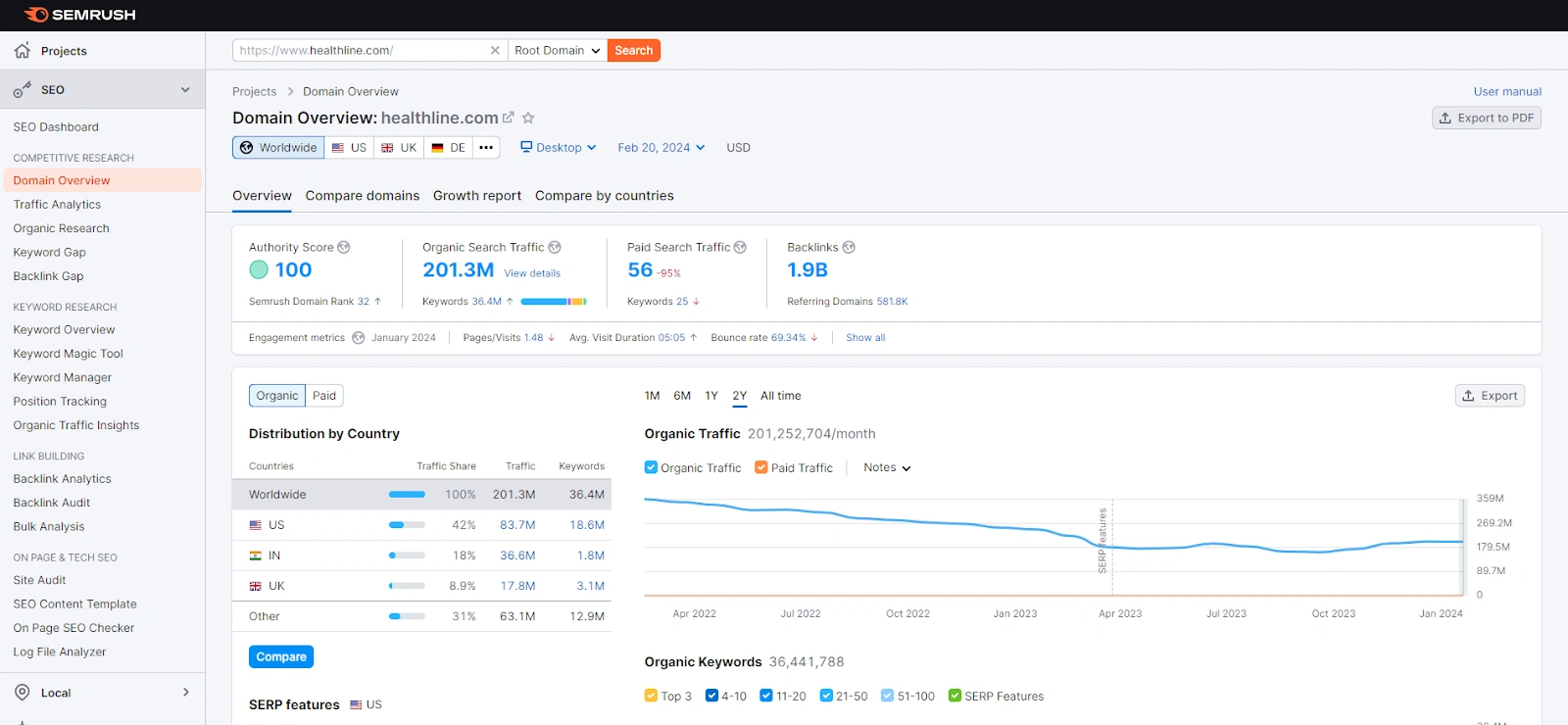
5. Organic Research to find SEO competitors and keyword gaps.

6. Advertising Research to analyze paid search landscape and ads.
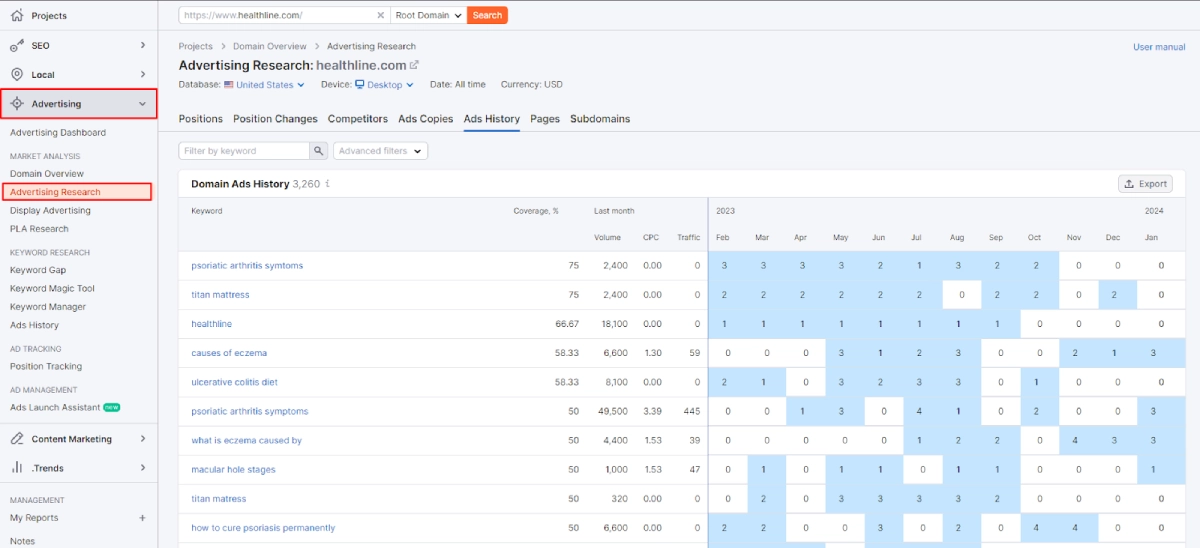
7. Backlink Analytics to identify potential backlinking opportunities.
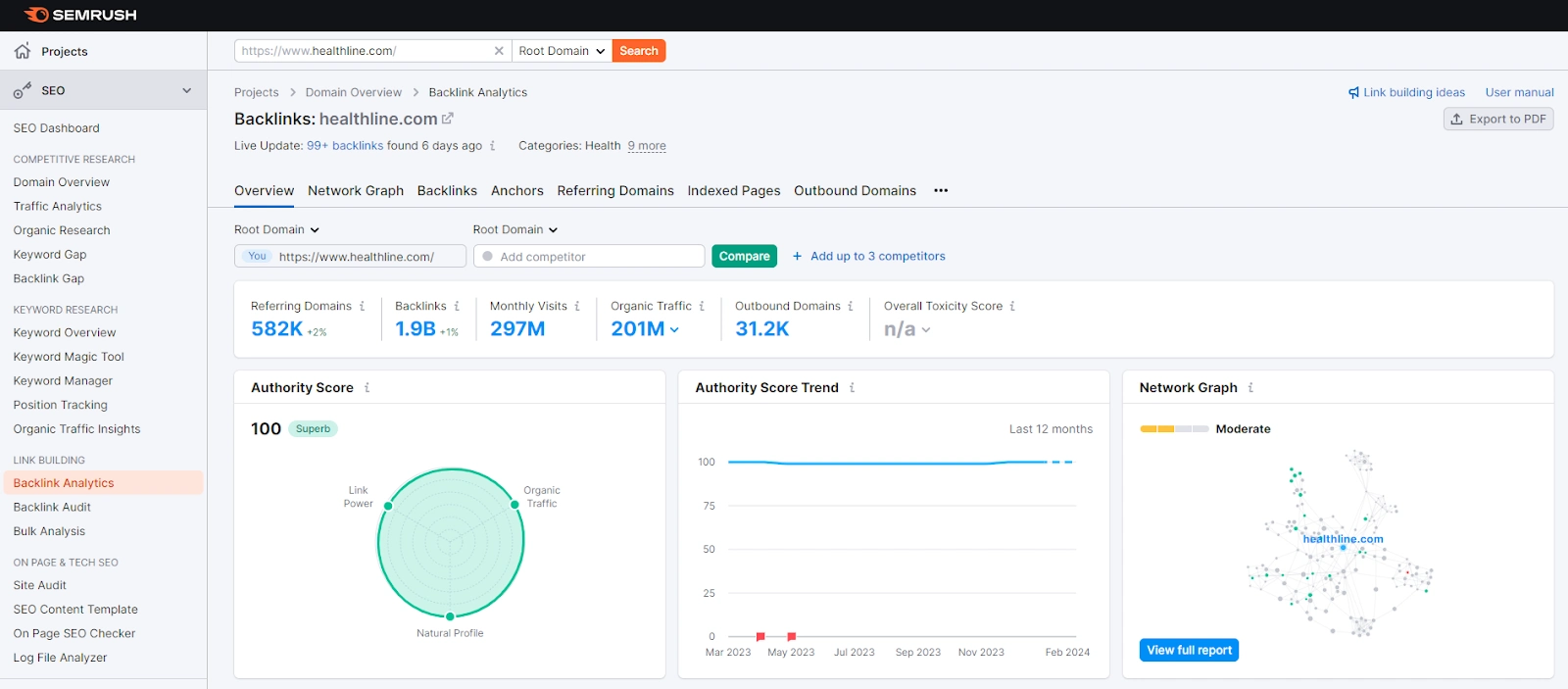
8. Use Traffic Analytics for insights into traffic sources, bounce rate, time on site, etc.
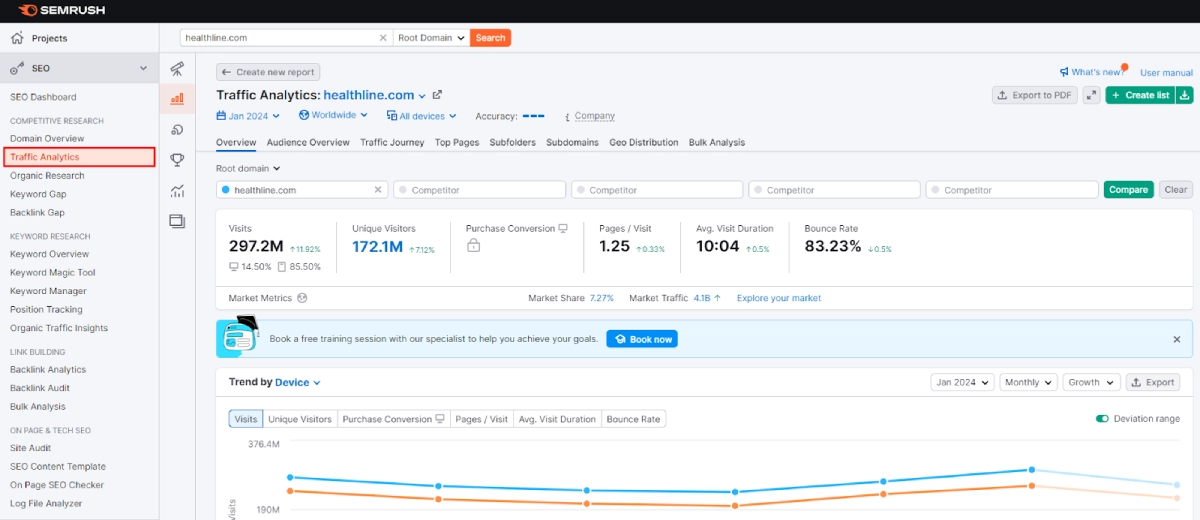
9. Compare the website’s metrics against your own site and competitors to assess suitability for parasite SEO.
Remember Semrush offers additional features beyond basic backlink and traffic analysis to expand competitive analysis capabilities.
There is no doubt that Parasite SEO can help improve your rankings if done right, but it also has risks. Think about whether you’re okay with not having full control and the uncertainty of relying on other websites to show your content.
Decide if you want to play by the rules (white hat) or take risks (black hat) when it comes to SEO. It’s important to find a balance between using trustworthy sites and following SEO rules for long-term success.
The SEO world changes fast, so it’s crucial to stay flexible and adjust your strategies over time. While not perfect for every business, with effort and flexibility, parasite SEO can boost your online presence and authority.